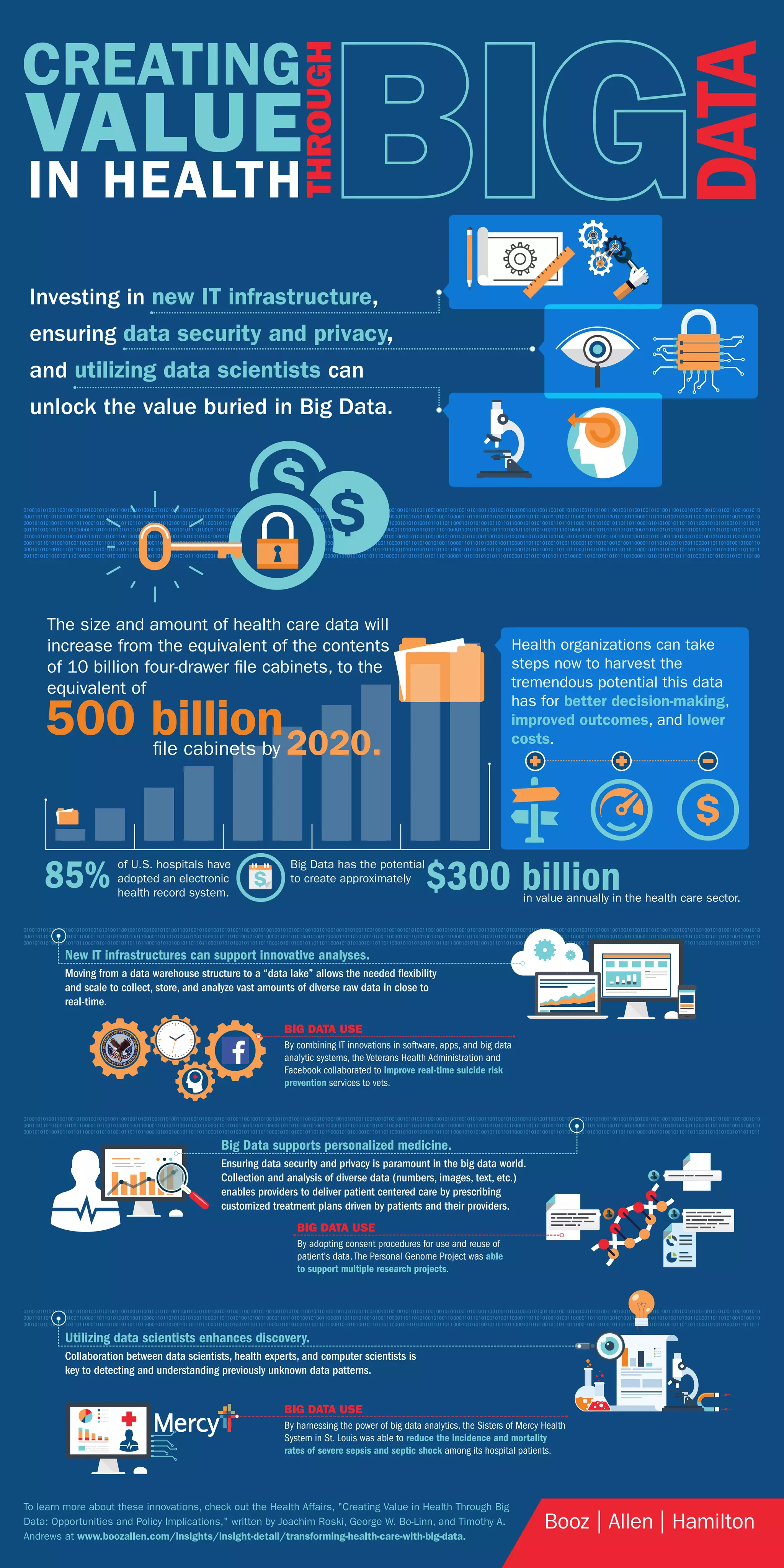Downloaded 10 times


This document discusses how big data can be used in healthcare to improve outcomes. It describes how new IT infrastructure, data security, and data scientists can unlock value from big data. Combining these innovations allows for personalized medicine through customized treatment plans. Collaboration between data experts and health professionals is key to detecting unknown patterns in data that can enhance discovery. Examples are provided of how big data has helped reduce mortality from sepsis and supported medical research through shared data initiatives.
